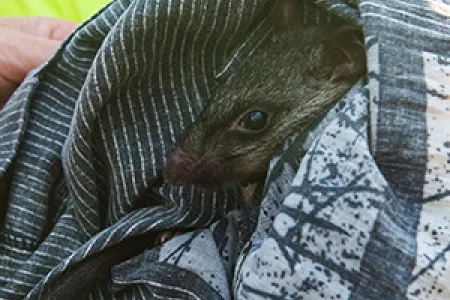Native rats, possums ‘adapt’ to life in the suburbs
Charles Darwin University researchers are discovering the secrets to survival of threatened black-footed tree-rats and possums that live in Darwin bushland.
Project leader Dr Brett Murphy said these tree-dwelling mammals were sheltering in anything from buildings to leafy gardens and pandanus clumps during the daytime.
The team made these early findings after placing radio collars on tree-rats and possums in Casuarina bushland and tracking their movements for six weeks.
Dr Murphy said the team aimed to investigate why tree-rat and possum populations had declined significantly across most of the Top End, but persisted in Darwin.
“It’s a mystery. One hypothesis is that cats are driving their decline in remote areas, but Darwin also has feral cats so it doesn’t explain why they do better here,” he said.
Dr Murphy said that a shortage of sizeable hollows in Darwin bushland after Cyclone Tracy had led these animals to seek shelter in foreign areas.
“We think these animals are hiding in interesting spots because they are desperate for places to shelter during the day,” he said. “It appears that they still need bushland areas for food and other resources, but they are also using resources in foreign areas.”
Earlier this year, the team installed 200 nest boxes in trees along the Cobourg Peninsula, which resulted in a successful uptake by tree-dwelling mammals in the area. Dr Murphy said the team planned to run a nest box project in Darwin during 2017.
The team includes CDU conservation biologists Professor Michael Lawes and Dr Leigh-Ann Woolley, and Dr Ian Radford from the Western Australia Department of Parks and Wildlife.
